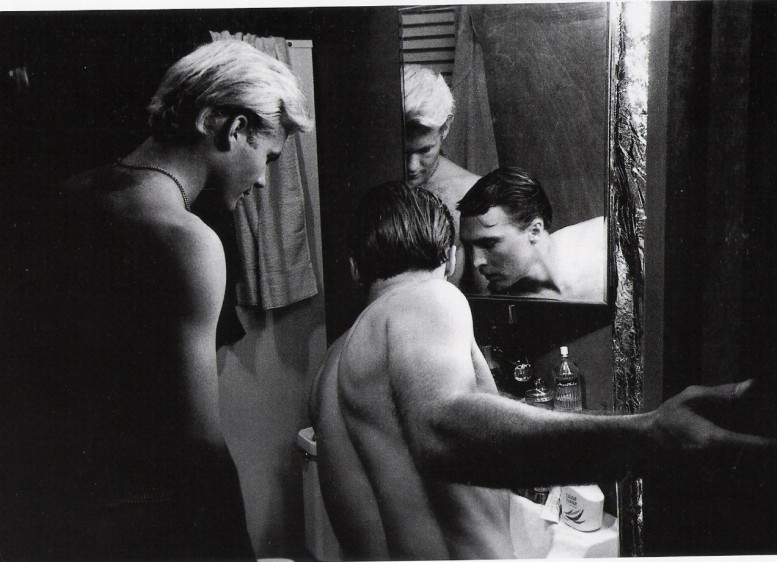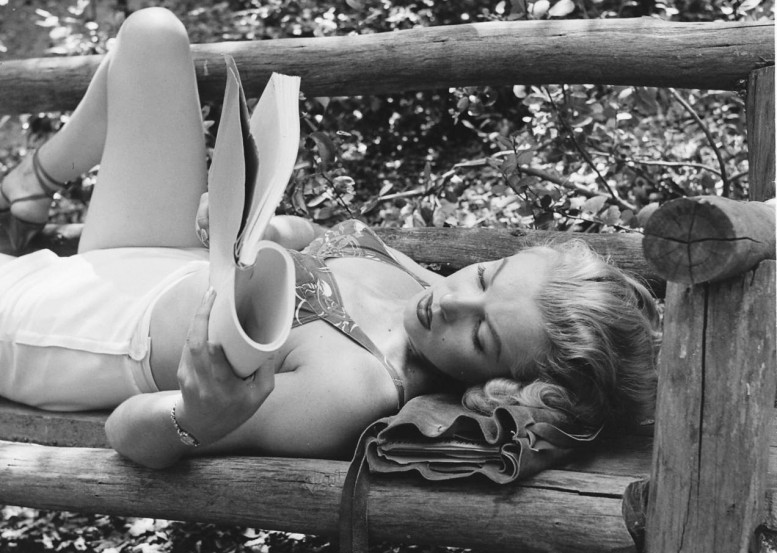[fashion week] BLK DNM "Film 2"
Johan Lindeberg, designer of the BLK DNM label, premiered a new fashion film, entitled "Film 2", this week during fashion week with a private screening at the SOHO store in New York. Directed by Martin de Thurah – starring Raina Hammer.
Charlotte Olympia – To Die For
Charlotte Dellal, of Charlotte Olympia shoes, has created a surreal murder mystery film to unveil her autumn/winter 2011-12 collection. Starring Portia Freeman as the beautiful Lady Webb, it brings the Olympia world to life in the sumptuous setting of Blake's Hotel.
IO ECHO
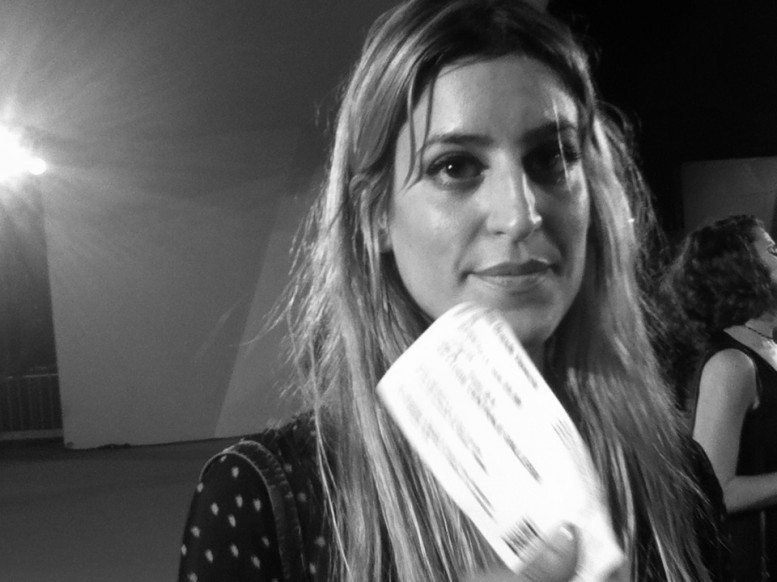
JOANNA GIKA of IO ECHO at the premier of SAL at the Venice Film Festival in Italy. IO ECHO wrote music for CAPUT – a short film collaboration between JAMES FRANCO & HARMONY KORINE for REBEL which opens today on Isola Della Cortosa as part of the VENICE BIENNALE. Photography by ADARSHA BENJAMIN
James Franco at the Premier of Sal
JAMES FRANCO at the premier of his film SAL, about the final hours of the life of actor SAL MINEO. Venice Film Festival, Italy. Photography by ADARSHA BENJAMIN
Selma Hayek at the Gucci Ceremony for Women in Cinema
68th Venice Film Festival – Tonight MADONNA presented the 2011 Gucci Award for Women in Cinema. Headed by Gucci's creative director FRIDA GIANNINI the jury consisted of the actress ROBIN WRIGHT, actress VALERIA GOLINO, JAMES FRANCO and film journalist GIULIA D'AGNOLO VALLAN. This years award was given to the Tree of Life actress JESSICA CHASTAIN. Photo by ADARSHA BENJAMIN
Rebel: Behind the Scenes at Bungalow 2, Chateau Marmont
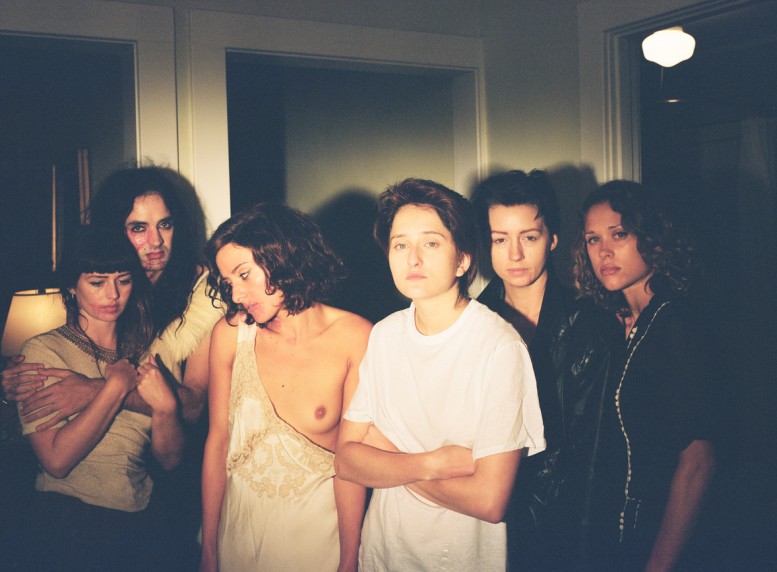
James Franco's Rebel opens September 4 on Isola Della Cortosa in Italy. Photo by Adarsha Benjamin
Elite of the Obscure
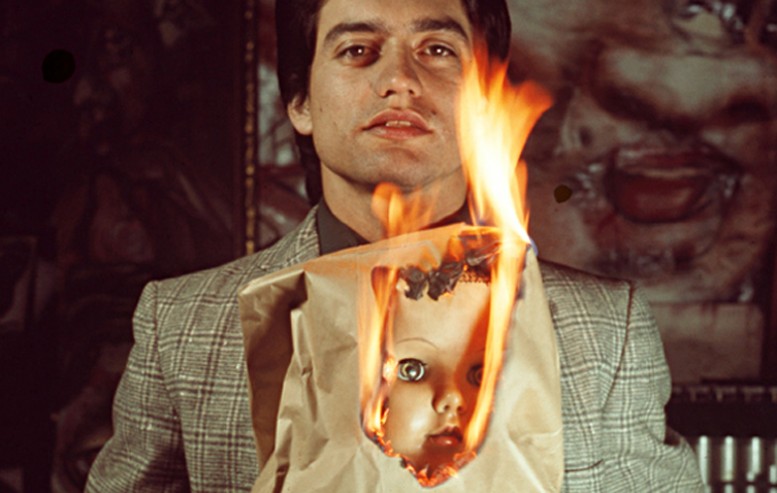 Harry Gamboa, Jr, Cruel, 1975. Super-8 film. Showing Willie Herrón III
Harry Gamboa, Jr, Cruel, 1975. Super-8 film. Showing Willie Herrón III
This September, The Los Angeles County Museum of Art (LACMA) presents Asco: Elite of the Obscure, A Retrospective, 1972–1987, the first retrospective to present the wide-ranging work of the Chicano performance and conceptual art group Asco. Geographically and culturally segregated from the still-nascent Los Angeles contemporary art scene and aesthetically at odds with the emerging Chicano art movement, Asco members united to explore and exploit the unlimited media of the conceptual. Creating art by any means necessary — often using their bodies and guerilla tactics—Asco merged activism and performance and, in doing so, pushed the boundaries of what Chicano art might encompass. Asco: Elite of the Obscure includes nearly 150 artworks, featuring video, sculpture, painting, performance ephemera and documentation, collage, correspondence art, photography (including their signature No Movies, or invented film stills), and a series of works commissioned on occasion of the exhibition. Asco: Elite of the Obscure is on view at the Los Angeles Contemporary Museum of Art September 4 to December 4.
Rebel on Certosa Island
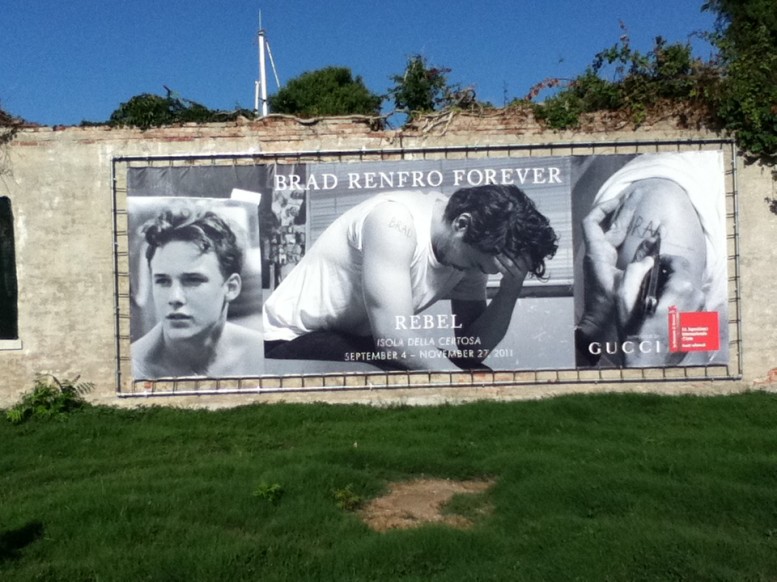
As part of the Venice Biennale in Italy, James Franco's site–specific film installation, entitled Rebel, will open on the island of Certosa. Rebel is a collaboration with artists Douglas Gordon, Harmony Korine, Paul McCarthy, Ed Ruscha, Aaron Young that "unites the myth-making allure of cinema and contemporary art, and acts as interrogative ode to Hollywood iconography." Rebel will be on view on Certosa Island from September 4 to November 27. Photo by Adarsha Benjamin
[Excerpt] An Interview with Bruce LaBruce

Bruce LaBruce is a filmmaker, an artist, and a pornographer, and underneath the blood soaked sheets and layers of half rotting flesh of the undead he is one of the greatest auteurs and romantics of the last few decades. I was able to ask Bruce a few questions and we talked about important topics such as his childhood in rural Canada, the alternative gay movement, sex in art, and a few of his current and upcoming projects, including his film L.A. Zombie Hardcore, a documentary on the artist himself entitled The Advocate for Fagdom by French filmmaker Angelique Bosio, and a short film involving two female to male transexuals which will premier at the Berlin Porn Festival this October.
You wrote a memoir called the reluctant pornographer – what does pornography mean to you? Well, lately I've been saying, which has sort of gotten me in trouble, because lately I've been calling myself a pornographer and saying I express solidarity with pornographers – that all pornography is art, really, because its a form of creative expression, its the mediation of reality, its made by people who use the tools of cinema, or making art, so why shouldn't it be considered art as well? There's good art and there's bad art and there's good pornography and there's bad pornography, but its all sort of an artistic expression as far as I'm concerned.
How important is sexuality in art or expressing sexuality through art? For me personally, sex has always been an engine behind my work, both in terms of representing and in terms of making it, on a personal level, but I think the sexual and the creative drives are very much linked, but on the other hand I know people who are relatively, or fairly, or completely a-sexual who have very strong artistic drives, so I don't think that's necessarily the case for everyone. Certainly with the gay movement was always based on that kind of sexual engine as well, which for me is yet another reason why, for me, the assimilation movement, which tends to be more domesticated and kind of based on ideals of monogamy borrowed from straight culture - it kind of dissipates the energy of the gay movement in my opinion. Yeah, sex is so ubiquitous in pop culture and advertising that its kind of hard to ignore it as an artist.
Do you think its more ubiquitous now than it has been? Well, I think that whats been happening in the last ten to fifteen years is that violence supplanted sex as the main driving force of popular fetish and popular advertising and certainly the media news sells violence and death in a very titillating kind of sexualized way - which is kind of creepy.
Full article and interview coming soon.....
Text by Oliver Maxwell Kupper for Pas Un Autre
A SHOE IS BORN - GUIDI EXHIBITION
Guidi’s shoe collection is among the most coveted in the world. Tracing their origin back to the 14th century guilds of tanners and master shoemakers of Tuscany, Guidi’s shoes are the product of wisdom, tradition, and proprietary processing techniques. The ultimate result is the perfect shoe: a relic of an age which predates the paradigm of mass production and will likely outlast it. The Guidi Exhibition - "a visual journey through the handcrafted stages in the production of 988 guidi shoes," will be on view through at various galleries, boutiques, and ateliers throughout the year. The next stop will be the boutique Chegini, Wien in Vienna from September 1 to October 1.
Cris Cleen Works
Short documentary on tattoo artist Cris Cleen by Andreas Tagger from Brothers By Choice.
[FILM STILL] MY HUSTLER by Andy Warhol
Directed by Andy Warhol & Chuck Wein. With Paul America, Ed Hood, Joseph Campbell, Genevieve Charbon. In this early Warhol narrative, several men and women on Fire Island vie for the attention of a hustler. Featuring catty dialogue, a few long takes, and limited camera movement, the film appears artless at first but ultimately proves canny, casual, and affecting. On view tonight and Wednesday night the MoMA in New York as part of the Hot and Humid: Summer Films from the Archives series.
[IN THEATERS] The Man Who Fell To Earth
David Bowie in Nicolas Roeg's THE MAN WHO FELL TO EARTH (1976). Courtesy BFI.
“Are you Lithuanian?” After a space craft seemingly crashes to Earth, David Bowie walks off to sell a ring for twenty bucks in a dusty Southwestern town, then almost immediately hires high-priced, thick-spectacled patent attorney (Graduate screenwriter Buck Henry) to register ten world-changing patents. Orange-haired, pale-faced, minimally expressioned Bowie (the pop legend obviously well-cast as an alien in his first starring role) desperately yearns to return himself and water to his parched planet — but will the authorities let him? — with coed-shtupping professor Rip Torn providing technical help, and chambermaid Candy Clark providing distractions via overdoses of very terrestrial booze, church, sex, and television (“Get out of my mind, all of you!”). Roeg’s science fiction cult classic/cautionary moral tale is an assault of fragmented, non-linear narrative style, typically striking visuals, echt 70s soundtrack by John Phillips of The Mamas and Papas (along with period “needle drops”), with a pathbreaking no-comment depiction of a gay couple and multiple eye-brow-raising sexual romps — including one punctuated by gunshots. All too often seen in washed-out copies, this new 35mm print of the uncut director’s version allows Roeg’s dazzling visuals (Pauline Kael called him “the most visually seductive of directors”) to be seen as they were meant to be. [site]
Roman Polanski Film Retrospective at the MOMA
Roman Polanski has, over the course of a half century, become recognized as one of the great modern masters of the cinema. Many of his films are infused with a mysterious, difficult-to-define sense of dread, which is understandable given much of his early life experience. Polanski’s parents were sent to a concentration camp, where his mother died, and he lived as a fugitive Jewish teenager in Nazi-occupied Poland. His 1984 autobiography begins, “For as far back as I can remember, the line between fantasy and reality has been hopelessly blurred,” and his films use the fantastical elements of cinema to make sense of the extraordinary reality he has experienced. Roman Polanski, a film retrospective at the NY MoMA, will run from September 7 to September 30.
Lost Film of 24 Year Old Hitchcock Found in New Zealand
A lost 1920s Alfred Hitchcock film that provides clues into the legendary director's early working style has been discovered in New Zealand, archivists said on Wednesday. Recently uncovered film "The White Shadow" features a 24 year-old Hitchcock's work as a writer, assistant director, art director and editor. The film was first released in 1924. It is considered to be the earliest surviving feature film in which Hitchcock received a credit, according to the U.S.-based National Film Preservation Foundation. Only the first three of the movie's six reels survive. That adds to the movie's mystery, which some film buffs see as fitting for Hitchcock, because he was famous for creating mysterious stories full of suspense.
The Lost Footage of Ken Kesey's Magic Ride
Timothy Leary and Neal Cassady in MAGIC TRIP, a Magnolia Pictures release. Photo © Allen Ginsberg, CORBIS.
right: Ken Kesey in MAGIC TRIP. Photo © Ted Streshinsky, CORBIS. right: The Bus in MAGIC TRIP. Photo © Ted Streshinsky, CORBIS.
In 1964, Ken Kesey, the famed author of “One Flew Over the Cuckoo’s Nest,” set off on a legendary, LSD-fuelled cross-country road trip to the New York World’s Fair. He was joined by “The Merry Band of Pranksters,” a renegade group of counterculture truth-seekers, including Neal Cassady, the American icon immortalized in Kerouac’s “On the Road,” and the driver and painter of the psychedelic Magic Bus. Kesey and the Pranksters intended to make a documentary about their trip, shooting footage on 16MM, but the film was never finished and the footage has remained virtually unseen. With MAGIC TRIP, Oscar-winning director Alex Gibney and Alison Ellwood were given unprecedented access to this raw footage by the Kesey family. They worked with the Film Foundation, HISTORY and the UCLA Film Archives to restore over 100 hours of film and audiotape, and have shaped an invaluable document of this extraordinary piece of American history. Magic Trip opens this month.
Watch "The Light Was Numbered"
Check out the new short film, "The Light Was Numbered" by photographer Amanda Zackem.
Marilyn Monroe Pornographic Film To Premier in Buenos Aires
In 1946, Norma Jean, later known as Marilyn Monroe, starred along side an anonymous actor in a 6 minute long nudie flick. In the possession of a Spanish collector, no one knew of the film's existence, until he died, and now his children have decided to auction it off. It is now on sale for a base price of half a million dollars and will premier this August at the Buenos Aires International Independent Film Festival in Argentina.
Glamour of the Gods
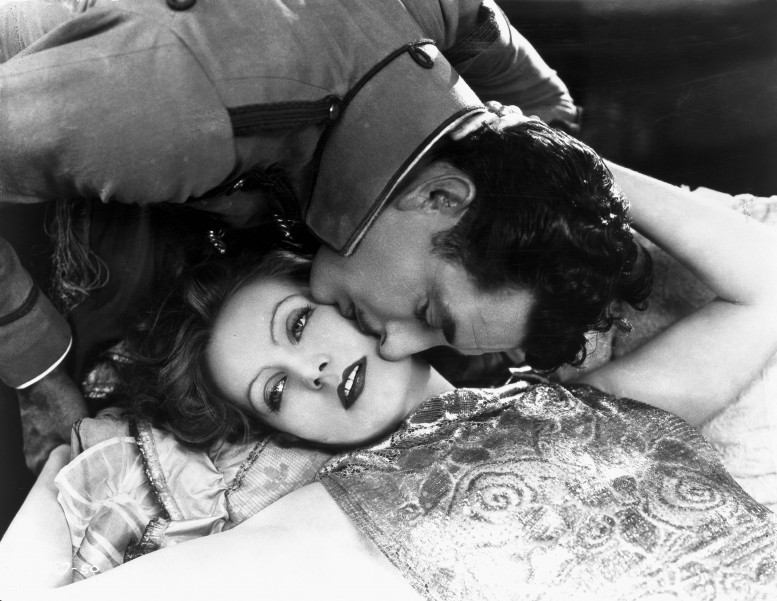 Leo (John Gilbert) kisses Felicitas (Greta Garbo) in Flesh and the Devil (1926)
Leo (John Gilbert) kisses Felicitas (Greta Garbo) in Flesh and the Devil (1926)




